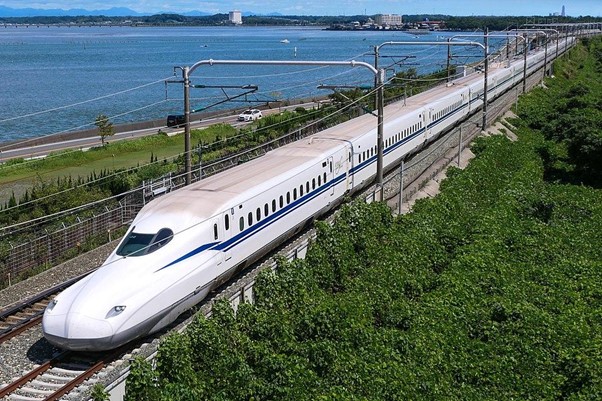Since its inaugural run in 1964, Japan’s Shinkansen, or “bullet train,” has become a global benchmark for high-speed rail safety, punctuality, and engineering precision. Over the past six decades, the Shinkansen has transported more than 5.3 billion passengers without a single passenger death due to train accidents — a record unmatched in the world of rail transport.
A Legacy of Zero Fatalities
Japan’s Shinkansen system is widely recognized for its flawless safety record. According to East Japan Railway Company (JR East) and data from the Ministry of Land, Infrastructure, Transport and Tourism (MLIT), the Shinkansen has operated without a single crash fatality since its launch in 1964, despite traveling through earthquake-prone regions and operating at speeds reaching up to 320 km/h (200 mph).
This remarkable feat stems from a carefully integrated system of safety protocols and innovations collectively referred to as the “Crash Avoidance Principle.”
The Crash Avoidance Principle: Technology Meets Engineering
Rather than relying solely on crash survival mechanisms, Japan’s approach is focused on accident prevention. The Shinkansen operates on dedicated tracks completely separated from conventional trains, eliminating the risk of collisions with slower services or level crossings.
Additionally, the network utilizes a state-of-the-art Automatic Train Control (ATC) system that ensures optimal braking, speed regulation, and emergency intervention. In the event of an earthquake, Japan’s early warning seismic system instantly triggers an automatic braking system, significantly reducing risk during tremors.
The trains themselves are aerodynamically designed, with earthquake-resistant infrastructure, rigorous maintenance routines, and real-time monitoring of weather and track conditions.
Unparalleled Punctuality: Delays Measured in Seconds
Safety is only one part of the Shinkansen’s excellence. The other is efficiency. Japan’s high-speed rail boasts a legendary on-time performance rate of 99%, with average delays measured in mere seconds per train, per year. According to JR Central, the average delay in 2022 was less than 20 seconds, including delays caused by natural disasters and other unforeseen events.
This consistency is achieved through precise scheduling, advanced signaling systems, and tight coordination between stations and train operators. Staff are trained to handle boarding and departure with military-like precision, often achieving 90-second turnaround times at stations.
A Global Model for High-Speed Rail
Japan’s Shinkansen has become the gold standard for high-speed rail systems globally. Countries like the United Kingdom, India, and the United States have studied and adopted elements of the Shinkansen model for their own rail development.
For example, India’s first bullet train project between Mumbai and Ahmedabad is being built in collaboration with Japanese engineers and technology, emphasizing the trust placed in the Shinkansen system as a reliable and scalable transport solution.
Conclusion
The Shinkansen is not just a marvel of transportation; it’s a symbol of how visionary engineering, disciplined operation, and continuous innovation can create a virtually flawless transit system. With zero crash fatalities in over 60 years and punctuality rates that defy global norms, Japan’s Shinkansen remains the world’s safest and most efficient high-speed rail network.
Sources:
- East Japan Railway Company (JR East) – www.jreast.co.jp
- Central Japan Railway Company (JR Central) – global.jr-central.co.jp
- Ministry of Land, Infrastructure, Transport and Tourism (MLIT), Japan – www.mlit.go.jp
- BBC – “Why Japan’s bullet trains are so punctual” (2022)
- Japan Times – “Shinkansen celebrates 50 years without a fatality”
- Nikkei Asia – “Japan’s Shinkansen proves rail safety is possible”













